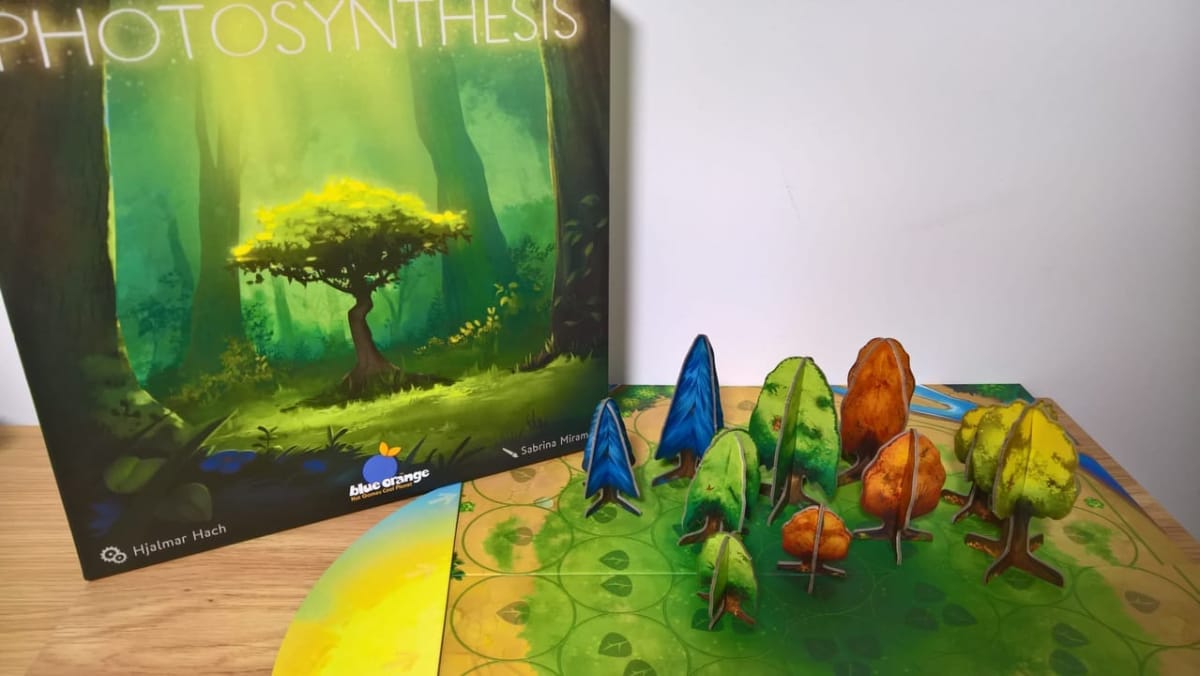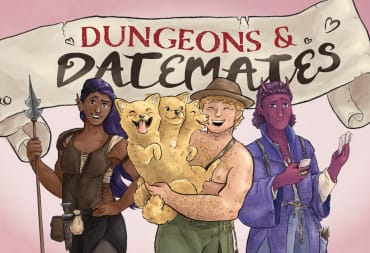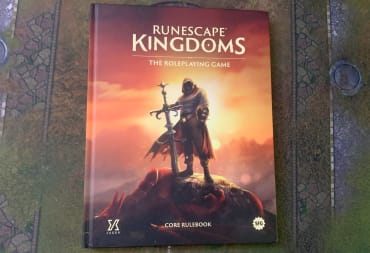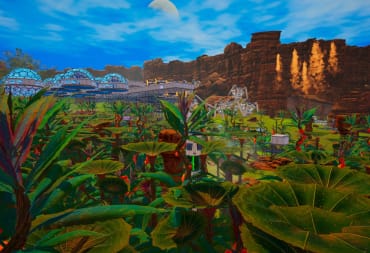You could be fooled by looking at the Photosynthesis components. They make you believe you are getting into a lighthearted game about the life cycle of a forest. The cute cutout cardboard trees have wide-eyed wildlife peaking out from them, the components are done in subtle, easy-on-the-eye colours and there is a cut out sun that moves gently around the board. These are all a deceit though. What you are really doing, is entering the cut-throat world of the tree mafia, who vie for space and motion for sunlight. It's a tactical push for real-estate that will see one species rise to the top of the forest and leave the others wallowing in its shadow.
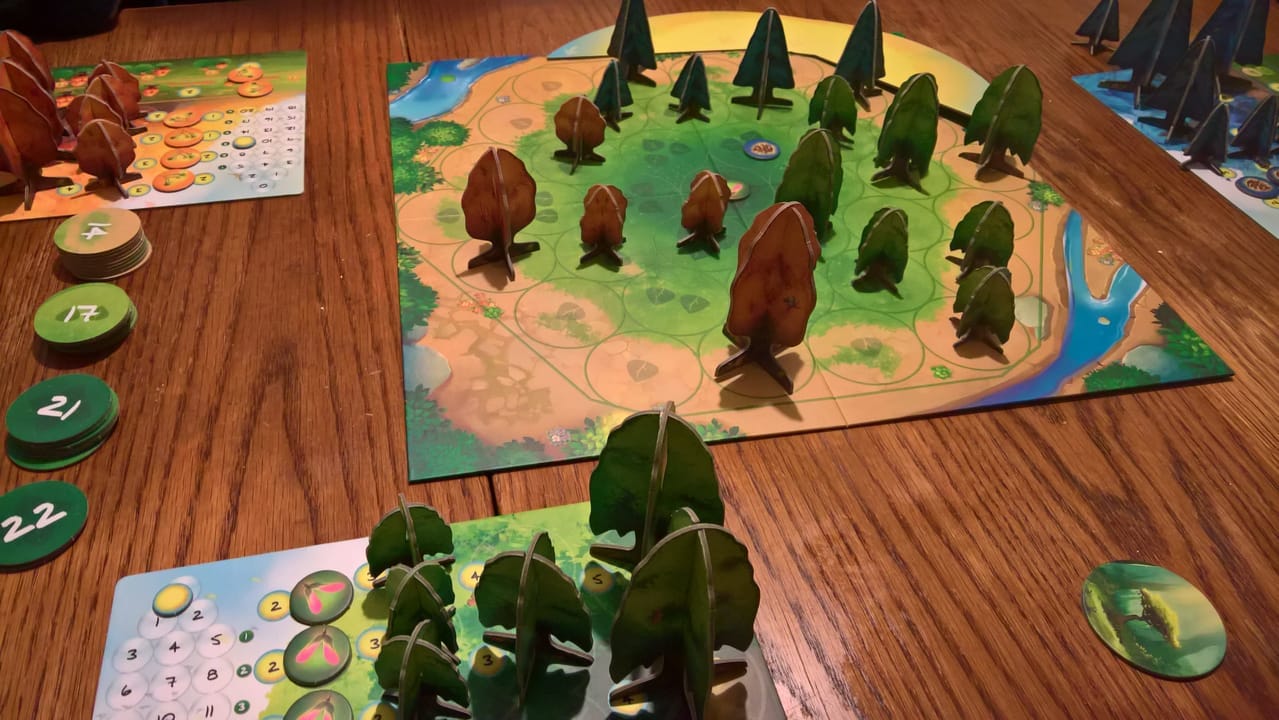
Photosynthesis is indeed a great looking game. Once all the trees are together and the board is set up, it has a delicate beauty to it and this is what has rightly gained it so much attention. Playing it in a club or board game cafe will have others asking about what you're playing. It looks inviting, and accepting. The light colors give it a friendly appearance, a family game.
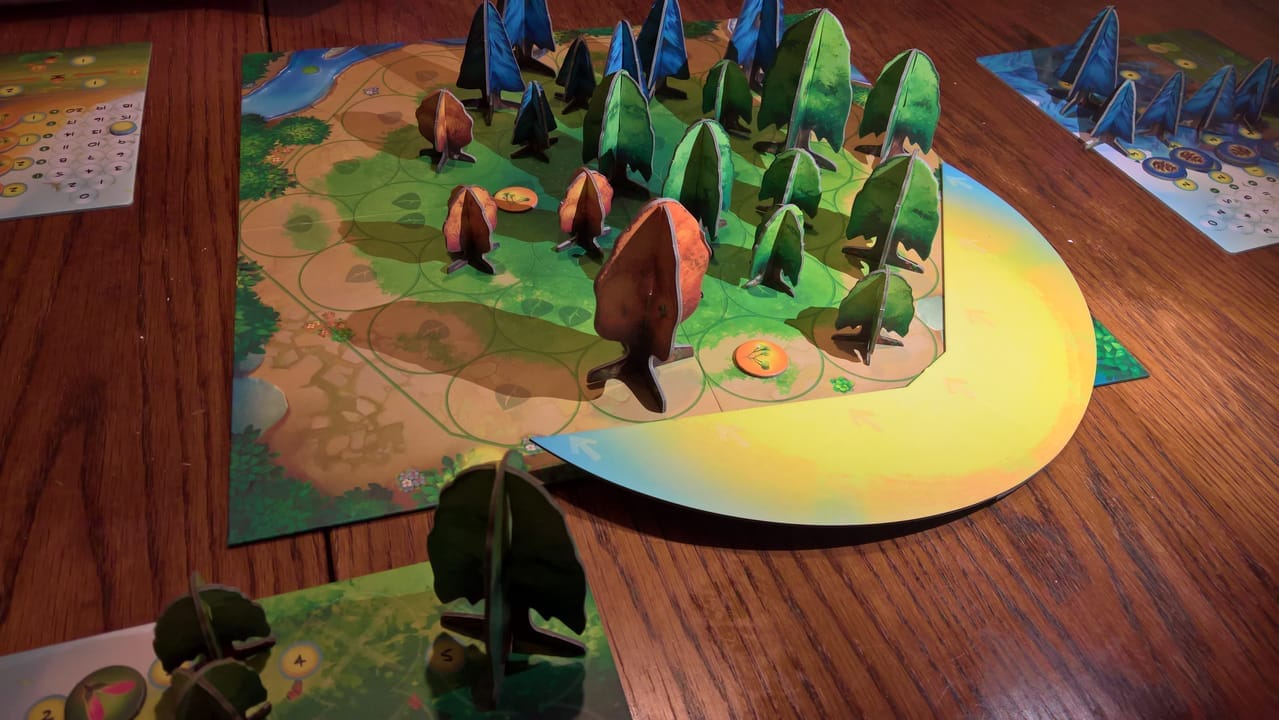
The rules for Photosynthesis are extremely straight-forward, they take a couple of rounds of play through to get everyone comfortable with, but after that everything will flow nicely. A regular game takes place over 3 full rotations of the sun. A single full rotation involves the sun moving around the outside of the board, into 6 set locations. Each time the sun is placed in a location, each player gathers light points for each of their trees, and uses those light points to grow their trees or plant new seeds.
However, light points are only gathered if your tree gets sun, and other trees, belonging to you and your opponent block the sunlight. The amount of sunlight blocked depends on how big the tree is and there are three sizes of trees, small, medium and large. Small trees block 1 circle away from the direction of the sun, medium trees block 2 and large trees block 3, meaning that with the right positioning, you can stop an opponent getting any points for a couple of turns as the sun moves around your trees.
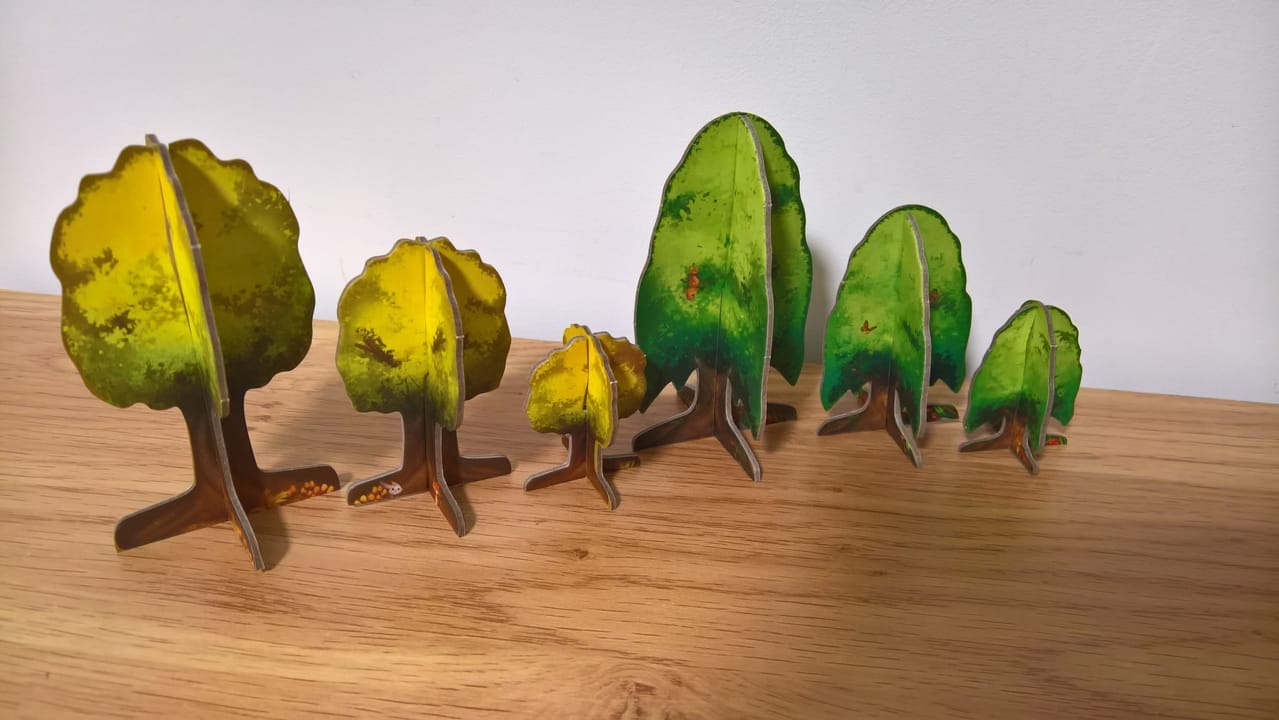
Each tree that isn't blocked earns light points, how many points depend on its size (1 for small, 2 for medium and 3 for large, as with how many circles they put in shadow). Each tree you already have can then either be upgraded for a certain amount of light points, or be used to plant a new seed in a space around it, which can then be upgraded to a small tree in the next turn.
Once a tree has been upgraded to a large tree, it can be evolved again for a cost in the following turn, which removes it from the board and gives the player a score token from to the soil level space it was taken from. Soil levels start at 1 around the outside edges and go up to 4 in the single central space, which scores the most points out of all the different soil points tokens.
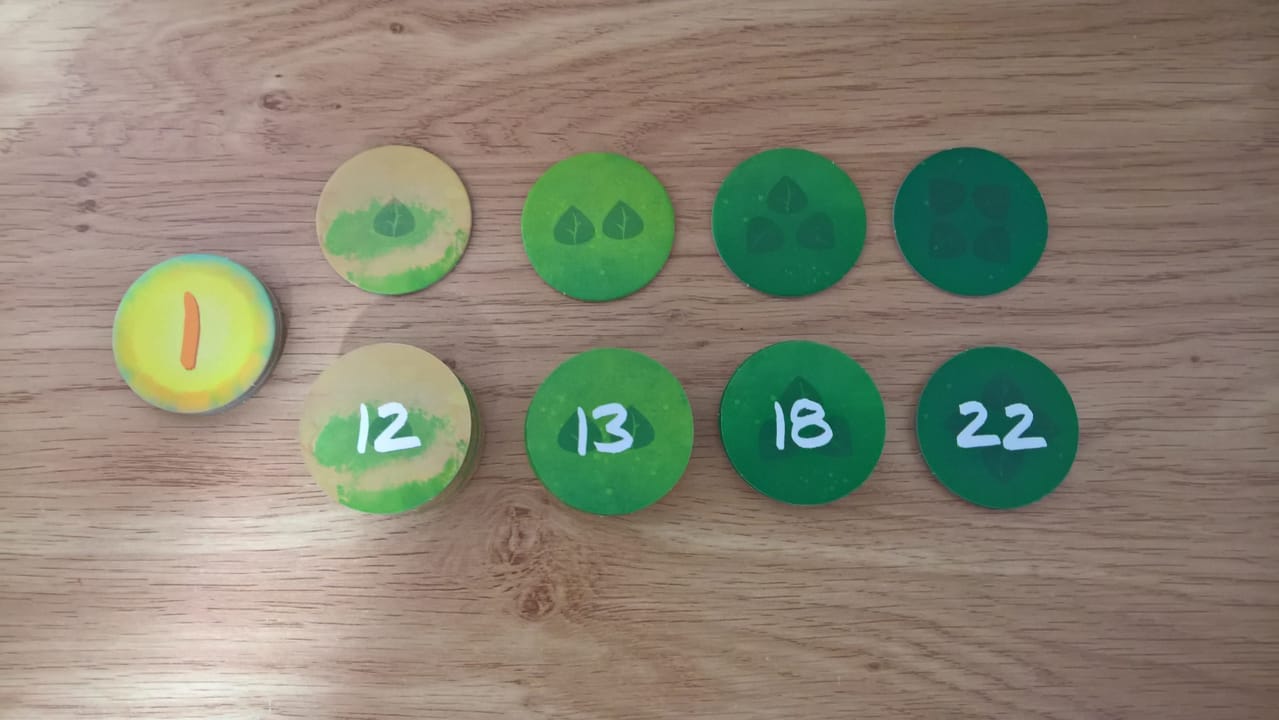
A regular game only has 18 turns (3 full rotations of 6 turns) so it can get quite cut-throat quickly, as players try to expand their empire and evolve their trees. The complexity of Photosynthesis only becomes apparent after your first full rotation as there are several ways to play. Players who go straight for expansion, evolving seeds to small trees and using those to then plant more seeds can cover the board quickly, but can find that their trees are blocked by other players trees, restricting their light points earning and thus slowing down their expansion. Yet players who go for the early full evolution can quickly find their space restricted by players clamoring for space.
The rotating sun adds a decent level of complexity as a large tree can earn you three light points and block the opponents trees, but you only have access to 2 of them, and to get points they need to be evolved and removed, so timing is essential. Once removed, the space they vacate is then also open for a turn, giving your opponents a chance to plant a seed there.
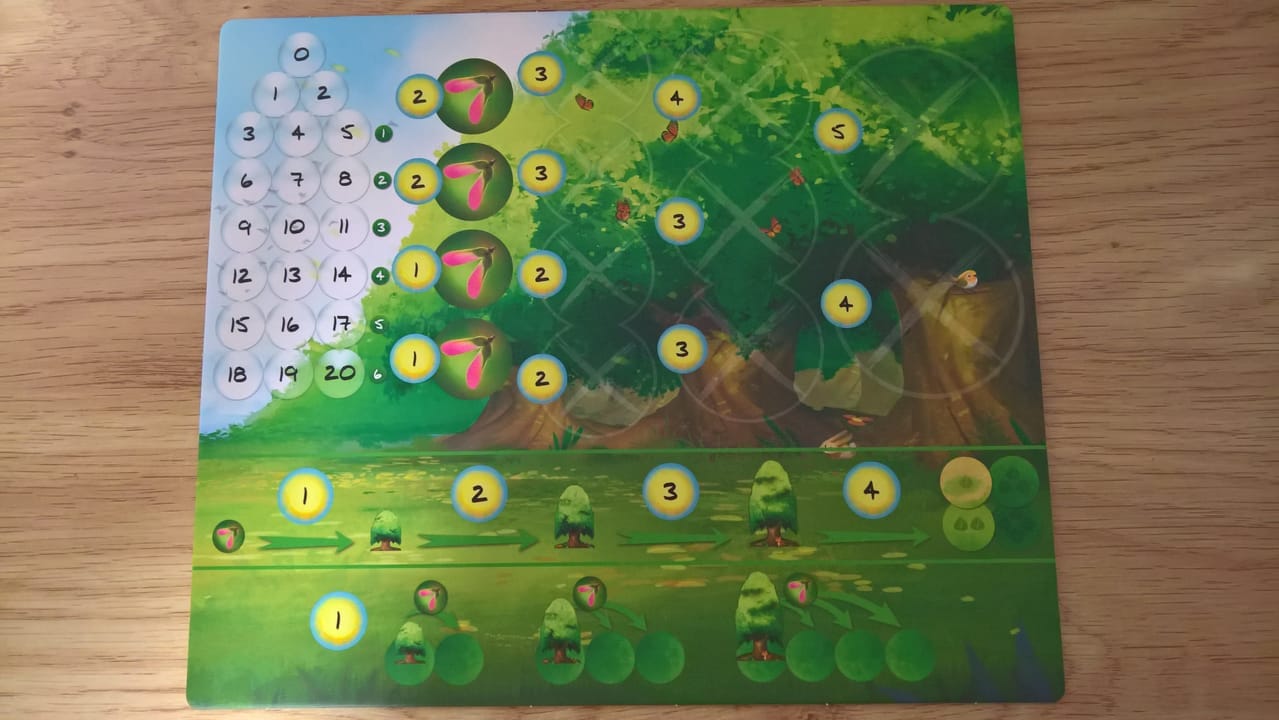
We were pleasantly surprised by how deep the tactical element of Photosynthesis is. The components disguise a much deeper challenge than first impressions would imply, especially with more than 2 players, as room for maneuvering and progression gets very tight after the first full rotation.
Playing with 2 players feels much like a game of chess, with both players trying to think several sun rotations ahead in terms of tree growth and progression, where as games of 3 or 4 players tends to be a lot more messy and as a result a lot of fun. It's hard not to play competitively with 2 players, as your are competing against the other person directly, but you can play 3 or 4 players relatively light-heartedly (or as competitively as you like).
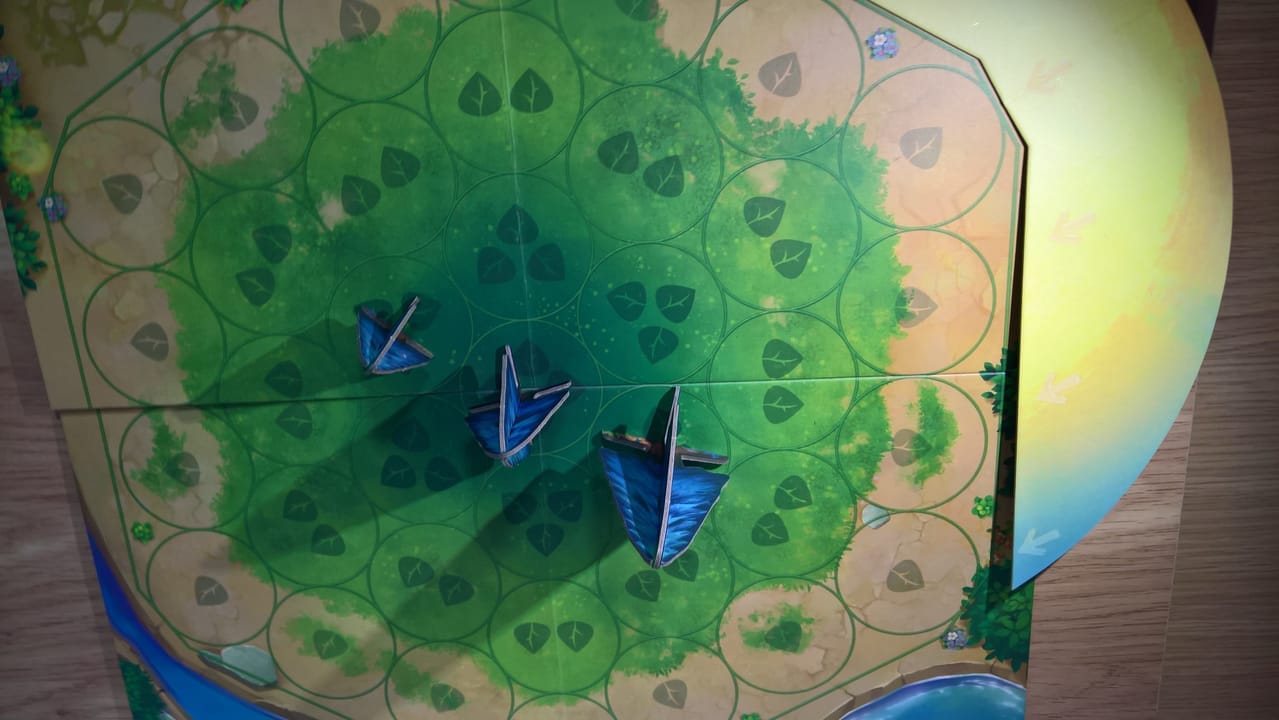
Our only issue with Photosynthesis is that the final few rotations can be pretty predictable as the earlier stages are the most important, as even if you've saved up a lot of light points. This is because it takes a few rounds to evolve your trees fully, and with only two large trees, it's difficult to make huge sweeping changes and points grabs. This makes the early to mid game extremely important and sometimes in the late game you can know you've already lost. This doesn't detract from the fun or interesting strategy of Photosynthesis, but it's certainly noticeable.
More advanced options are available for games of Photosynthesis, such as adding in an extra sun rotation (of 6 turns), for which the sun timer counter is provided in the box, or only allowing trees to evolve if they are not in shadow. Both of these do any an extra dynamic to games, the later adds a significantly more challenging tactical element if used.
The Bottom Line:
Photosynthesis is a fantastic looking, tactically challenging game. It's great with 2, 3 or 4 players and each offers it's own variety of challenge. Photosynthesis is a steady paced game where the early to mid game is very important strategically and can sometimes be difficult to catch up. Photosynthesis is a lot of fun, either competitively or if playing in a friendly group. The rules are very straight-forward, so easy to pick up and it's incredibly thematic throughout.
You want a thematic, strategically challenging board game.
You want a great that's great with 2, 3 or 4 players.
You want a steady paced game, with early choices having a big effect on the end game.
Avoid this game if:
You want a fast paced game with a tight end game.
Review Summary
The Photosynthesis components look great, and it's a very easy to learn, tactically challenging strategy game that's great with 2, 3, or 4 players. The early mid game is where most of the strategy is and sometimes the end game can be predictable, but it's a lot of fun and incredibly thematic.
(Review Policy)Have a tip, or want to point out something we missed? Leave a Comment or e-mail us at tips@techraptor.net
